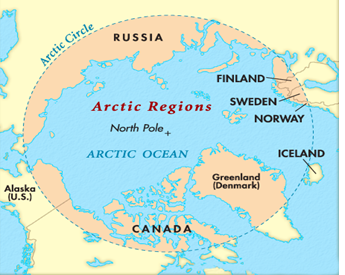

Context
Recently, the Union Minister of Earth Sciences flagged off India’s first winter scientific expedition to Himadri, the nation's Arctic Research Station situated in Ny-Ålesund within the Norwegian archipelago of Svalbard in the Arctic.
About the Research
- The first batch of the maiden Arctic winter expedition comprises researchers from the host National Centre for Polar and Ocean Research (NCPOR), Indian Institute of Technology (IIT) Mandi, Indian Institute of Tropical Meteorology (IITM) and Raman Research Institute.
The Winter Arctic Scientific Expedition:
- Indian scientific expeditions to the Arctic during the winter will allow researchers to conduct unique scientific observations during polar nights, where there is no sunlight for nearly 24 hours and sub-zero temperatures.
- It opens more avenues for India to expand our scientific capabilities in Earth’s poles.
- This will aid in expanding understanding of the Arctic, especially Climate change, space weather, sea-ice and ocean circulation dynamics, ecosystem adaptations, etc. which affect weather and climate in the tropics, including monsoons.
- India has operated a research base in the Arctic namedHimadri since 2008, which has been mostly hosting scientists during the summer (April to October).
- Priority research areas include atmospheric, biological, marine, and space sciences, environmental chemistry, and studies on cryosphere, terrestrial ecosystems, and astrophysics.
- India will join a small group of countries that operate their Arctic research bases through the winter.
- In recent years, climate change and global warming research has been attracting scientists to the Arctic region.
|
Note:
|




